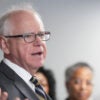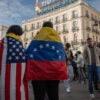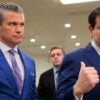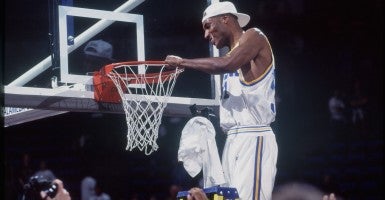On Sept. 30, 2015, in O’Bannon v. NCAA, the U.S. Court of Appeals for the 9th Circuit issued an opinion holding that the National Collegiate Athletic Association (NCAA)’s rules barring compensation to student-athletes for use of their name, image, or likeness (NIL rules) violated federal antitrust laws.
In so holding, the appeals court largely affirmed a decision by a lower federal court in a case brought by former UCLA basketball All-American Ed O’Bannon.
O’Bannon had alleged that NCAA rules that prevented him from being paid when his image was used in a video game ran afoul of the antitrust laws’ prohibition on unreasonable restraints of trade. This was the first federal appeals court ruling to strike down NCAA rules regarding the compensation of student-athletes.
The NCAA is an umbrella organization that regulates and oversees intercollegiate sports for its 1,100 member institutions. The appeals court found that while the NCAA has a legitimate interest in enacting rules that promote amateurism in college sports, that interest does not shield those rules from review under the antitrust laws, which seek to promote competition.
Although the appeals court said that the NIL rules served the pro-competitive purpose of integrating academics with athletics, it held that they significantly harmed competition by fixing an aspect of the “price” that recruits pay to attend college.
The Appeals Court then upheld the lower court’s requirement that the NCAA implement a “less restrictive alternative” to the current rules—allowing NCAA members to give scholarships up to the full cost of attendance.
The appeals court, however, overturned the lower court’s order that the NCAA also allow its member schools to pay student-athletes up to $5,000 per year in deferred compensation, finding that the payment of cash sums would be totally at odds with amateurism.
What’s the big deal? As a practical matter, the Ninth Circuit’s ruling may have a very minor impact on how colleges recruit and compensate star athletes in the short run.
NCAA member schools have long stressed to potential recruits such factors as athletic program prestige and media coverage, the quality of facilities, and similar non-cash attributes. Moreover, in 2014, the NCAA announced it would allow athletic conferences to authorize its member schools to increase scholarships up to the full cost of attendance.
Nevertheless, in the long run, this appeals court ruling may be highly significant. Major college sports is a very big business, with billions of dollars at stake, in television contracts, ticket revenues, and other payments flowing to athletic departments.
Only a very small portion of those monies are received by student-athletes, due in no small part to a slew of NCAA rules. In 2011, the late Nobel Prize Winner in Economics Gary Becker wrote that “[i]t is impossible for an outsider to look at these [NCAA] rules without concluding that their main aim is to make the NCAA an effective cartel that severely constrains competition among schools for players.”
Now that a federal appeals court has held that NIL rules violate the antitrust laws, other NCAA rules limiting student-athletes’ compensation may come under increased antitrust scrutiny and challenge. Stay tuned.































